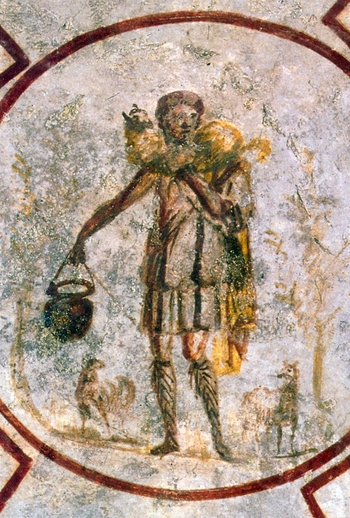I have talked before in these pages about Uhlhorns book on “Christian Charity in the Early Church”, and I think that Adolf Harnack took a great deal from that marvelous study in his book called, “The Expansion of Christianity in the First Three Centuries”. The Catacombs give us some early Christian artwork depicitng Christ as the Good Shepherd, but everywhere he was talked of as love and so his followers would be love too.
Note the ten distinctive features of Christian life and practice. Note that support of teachers and officials is a different feature that almsgiving. I think that is important and we will talk about why in the days ahead.
“The new language on the lips of Christians was the language of love. But it was more than a language, it was a thing of power and action. The Christians really considered themselves brothers and sisters, and their actions corresponded to this belief” It was through this motivation of love that the Gospel in Harnack’s phrase “became a social message” (p. 184). Because Christianity inculcated a vast ministry of brotherliness in the ancient world, Harnack is compelled to devote a long chapter to “The Gospel of Love and Charity” in which he calls special attention to these ten distinctive features of Christian life and practice: (1) almsgiving both individually and corporately; (2) support of teachers and officials; (3) support of widows and orphans; (4) support of the sick, infirm, disabled, and poor; (5) care for prisoners and for people languishing in the mines; (6) care of the poor requiring burial and of the dead in general; (7) care for slaves; (8) care for people visited by great calamities; (9) the provision of work; and (10) care for brethren on a journey (hospitality) and for churches in poverty or peril.”


